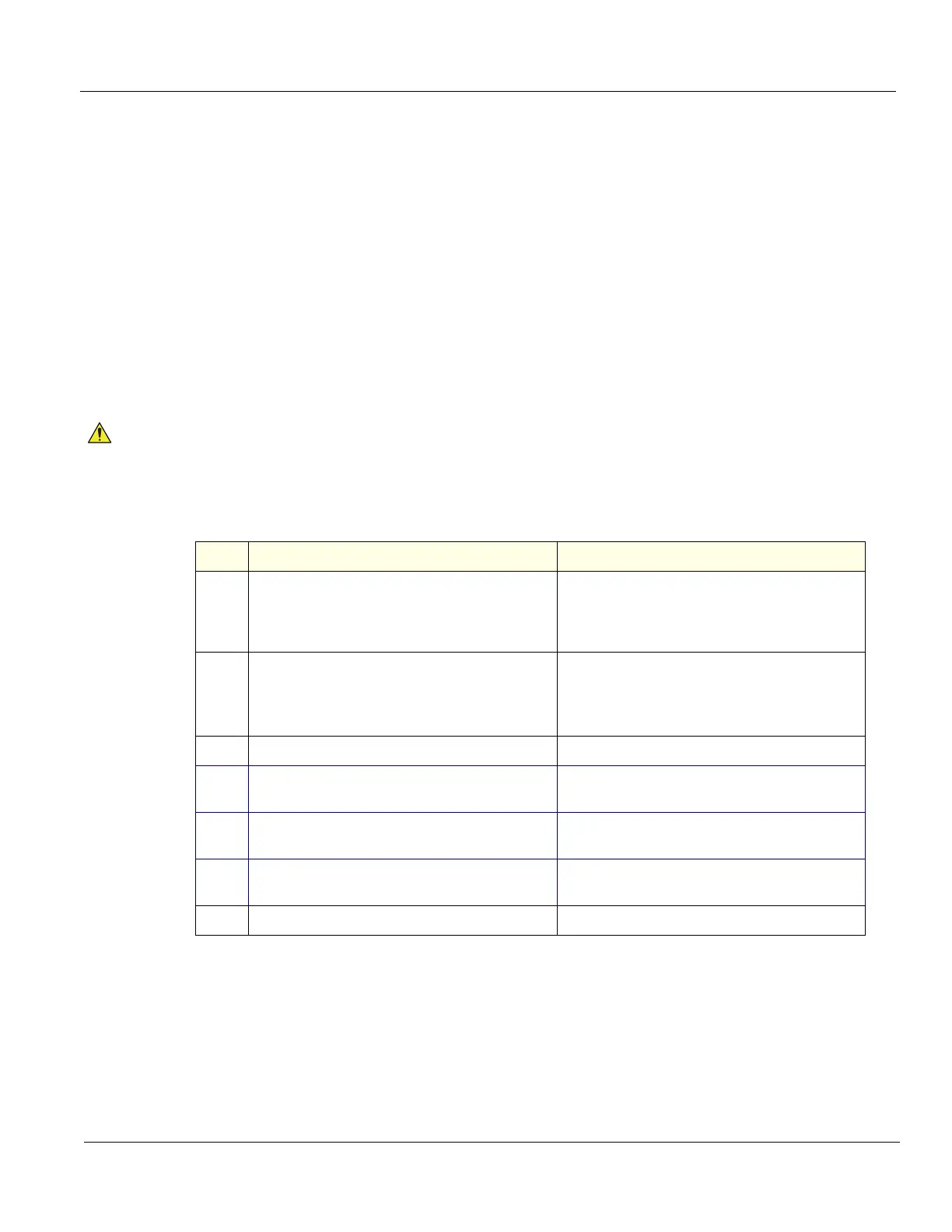GE HEALTHCARE PROPRIETARY TO GE
D
IRECTION 5394227, 12 LOGIQ S8/LOGIQ E8 SERVICE MANUAL
Section 4-4 - Functional Checks 4 - 37
4-4-15 Probe/Connectors Checks
NOTE: Probes can be connected at any time, whether the unit is ON or OFF.
4-4-15-1 To Connect a Probe
1.) Place the probe's carrying case on a stable surface and open the case.
2.) Carefully remove the probe and unwrap the probe cable.
3.) DO NOT allow the probe head to hang free. Impact to the probe head could result in irreparable
damage.
4.) Turn the connector locking handle counterclockwise.
5.) Align the connector with the probe port and carefully push into place.
6.) Turn the connector locking handle clockwise to secure the probe connector.
7.) Carefully position the probe cable in the probe cord holder spot so it is free to move, but not
resting on the floor.
4-4-15-2 TEE RS-DLP adapter + TEE probe
1.) Connect TEE RS-DLP adapter + TEE probe. Select cardiac application like “Adult”. And start scan.
2.) Verify calibration normally finished.
3.) Verify that B mode image appear.
CAUTION
TAKE THE FOLLOWING PRECAUTIONS WITH THE PROBE CABLES:
- KEEP AWAY FROM THE WHEELS
- DO NOT BEND
- DO NOT CROSS CABLES BETWEEN PROBES
Table 4-2 Probe and Connectors Checks
Step Task Expected Result(s)
1.
Select the appropriate connected probe from the
probe indicators on the Touch Panel.
The probe activates in the currently-selected
operating mode. The probe's default settings for
the mode and selected exam are used
automatically.
2.
Launch the application.
To change application without changing the
current probe, press the desired Mode on the
Operator Panel.
The selected application starts.
3. Verify no missing channels All channels is functioning.
4.
Verify there's no EMI/RFI or artifacts specific to
the probe.
No EMI/RFI or artifacts.
5.
Test the probe in each active connector slot.,
see: 3-6-4 "Connecting Probes" on page 3-15
It will display pictorial data each time
6.
Do a leakage test on the probe, see: Section 10-
8 "Electrical Safety Tests" on page 10-17
It passes the test.
7. Repeat this procedure for all available probes.

